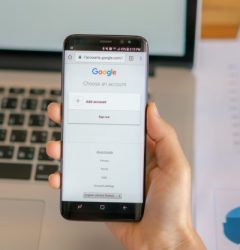Source: eandt
The combination of artificial intelligence with the Internet of Things connectivity is a game-changer for firms that recognise how taking shortcuts on their employees’ safety is a false economy.
According to United Nations agency the International Labor Organization, more than 2.78 million people die each year as a result of occupational accidents or work-related diseases. That’s more than 7,500 people a day. Additionally, 374 million non-fatal work-related injuries occur every year. Together, these incidents are estimated to cost companies almost $3tn.
It should go without saying that a company’s greatest asset is its employees. Whether it’s at a factory, construction site or mine, they’re always putting themselves at risk to deliver value to business, which in turn should be striving to provide them with a safe work environment, and designing safety programmes that establish a ‘zero injury’ commitment to protect them from potential risks. Not doing so not only runs the risk of the obvious emotional trauma, but also disrupts an organisation’s productivity – and profit margins through high costs resulting from insurance, liabilities and fines.
Technologies such as (AI) artificial intelligence and the Internet of Things (IoT) are game-changing for companies that want to ensure that their safety plans are adopted across the workforce. Whether your staff are working in remote locations, or are working onsite, IoT data and AI-based solutions can help you monitor worker and environment data in real-time, and enable teams to take actions based on the insights – saving time, money and, most importantly, lives.
These solutions typically work through a simple three-step process.
Think
Smart technologies can keep a continuous virtual eye on the external working environment via environmental sensors such as those detecting gas and air quality, equipment sensors, weather feeds, legacy system data, and wearable sensors that track workers’ health and well-being by measuring heart rate, variability, location and skin temperature. Software solutions continuously aggregate this data and analyse it to detect any potential hazards.
Inform
When an unwanted hazard is detected, such as a worker falling or high chemical toxicity in the environment, safety solutions trigger alerts to the supervisor and/or nearby workers to enable rapid emergency response or rescue as appropriate. Data can also warn if any safety incidents are likely to occur, such as rising worker fatigue levels, heat, stress, or proximity to danger. In this case, solutions can proactively warn the worker so that they can initiate self-preventive actions such as changing their path or resting.
Act
A good safety solution detects leading and lagging incidents and alerts for an action. It also allows users to report self-observations. These incidents are tracked so that teams can conduct a post-mortem analysis to determine the cause of incidents and take corrective steps to prevent them from happening again.
AI can help automate incident detection and alerting without requiring any new hardware installation. Most workplaces today already have CCTV systems installed on-premises. Through advancements in AI visual recognition and deep learning, companies can monitor real-time video feeds to ensure their workplace and workers are safe and in compliance. As workers enter a site, AI can detect if they are wearing required safety gear to ensure they are protected against risks, and alert them if they are missing any required safety equipment. The same technologies can monitor vehicles or personnel, allowing only authorised parties to enter without manual intervention. They can also be used to recognise worker movement and send alerts if any potential hazards or violations are detected.
Getting started is always the most difficult part of any initiative. Here’s how you can begin to assess whether your organisation is ready for proactive safety initiatives.
Start by identifying key safety incidents. By controlling and reducing the frequency of near misses, companies can drastically reduce the actual violations or incidents that occur at the workplace. Companies can look at their most common 3-5 near misses and work backwards to identify the best-fit technology capable of addressing them.
Next, customise safety hazards. Experienced safety solutions offer pre-built analytics to track common safety incidents and enable users to easily add rules and set out-of-tolerance parameters. For example, IBM’s Maximo Worker Insights has prebuilt analytics for detecting events such as falls, noise, gas leaks and go/no-go zone tracking.
Finally, setting key performance indicators plays a major role in assessing the chosen solution’s performance and return on investment. Mature solutions include pre-built dashboards for key users with relevant metrics. Safety officers are able to view the compliance status of the entire company, track total incidents and costs, while supervisors can monitor the real-time status of the work environment and workers.
This kind of proactive approach, enabled by technology, helps companies ensure that safety programmes are followed and that work environments are safe and healthy. This, in turn, helps them ensure their most valuable asset, the worker returns home safely at the end of every day.



